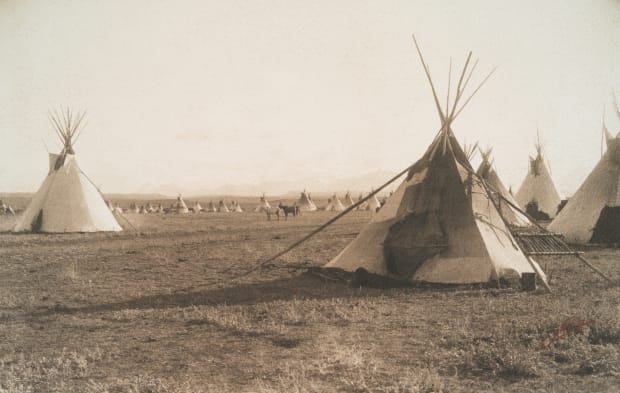Native American history, historically, has been poorly taught in our schools, if at all.
Anna Diamond, in an article in Smithsonian Magazine, Inside a New Effort to Change What Schools Teach About Native American History, writes: “Most students across the United States don’t get comprehensive, thoughtful, or even accurate education in Native American history and culture. A 2015 study by researchers at Pennsylvania State University found that 87 percent of content taught about Native Americans includes only pre-1900 context. And 27 states did not name an individual Native American in their history standards.”
Native American history is a rich, as well as a painful and tragic. story – and one we all need to know. It’s more than time for a change.
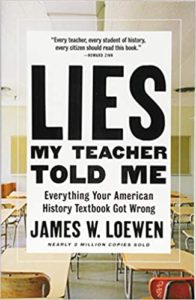 |
James W. Loewen’s Lies My Teacher Told Me: Everything Your American History Textbook Got Wrong (New Press, 2018) is a best-selling plea for truth in history education, including compelling chapters on the traditional teaching of Native American history. “Historically, American Indians have been the most lied-about subset of our population,” writes Loewen. |
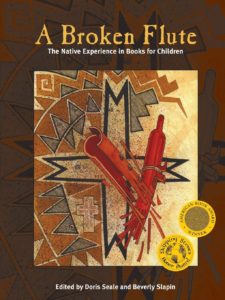 |
Edited by Doris Searle and Beverly Slapin, A Broken Flute: The Native Experience in Books for Children (AltaMira Press, 2006) is a compilation of essays and poems about negative or false portrayals of Native Americans in literature along with hundreds of critical reviews of books for kids and teens. A valuable resource. |
|
The American Indians in Children’s Literature blog provides critical reviews of books for children and young adults featuring indigenous peoples and cultures. |
Table of Contents
Native American History
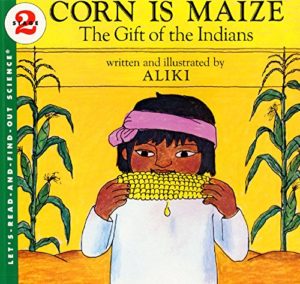 |
Aliki’s Corn is Maize: The Gift of the Indians (HarperCollins, 1996) is a simple and charmingly illustrated story of the history and science of corn. For ages 4-8. |
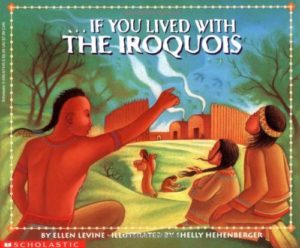 |
Scholastic’s If You Lived…series is written in a question-and-answer format that makes for a conversational and interactive read. Among the titles are If You Lived With the Iroquois (Ellen Levine, 1999), If You Lived With the Sioux Indians (Ann McGovern, 1992), If You Lived With the Cherokees (Peter and Connie Roop, 1998), If You Lived With the Hopi Indians (Anne Kamma, 1999), and more. Questions include: What did you wear? Who was your family? What would your house be like? What jobs did you do? Who were your enemies? What games did you play? For ages 6-10. |
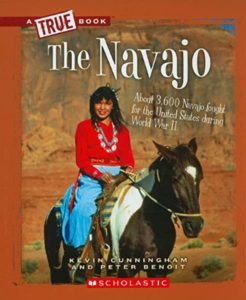 |
The True Books: American Indian series (Children’s Press) consists of 48-page picture-book introductions to many Native American tribes, illustrated with color photographs. Many titles including The Pueblo, The Navajo, The Inuit, The Wampanoag, The Apache, The Hopi, and more. For ages 7-10. |
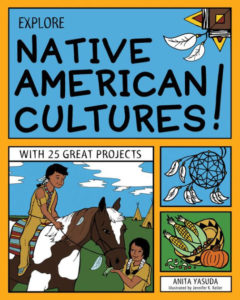 |
By Anita Yasuda, Explore Native American Cultures! (Nomad, 2013) introduces readers to seven major North American cultural regions, with background information, “Words to Know” boxes, catchy facts, and 25 hands-on projects, among them making a turtle shell rattle, a bear-claw necklace, a wampum belt, and a birchbark canoe. For ages 8-12. |
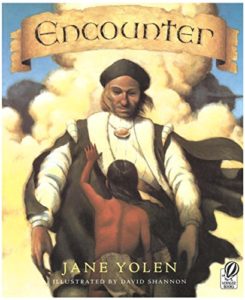 |
Jane Yolen’s Encounter (HMH, 1996), illustrated with detailed paintings by David Shannon, is an indigenous view of the story of Columbus, told from the point of view of a young Taino boy – who, after a frightening prophetic dream, tries to warn his people against the strangers. His warning is ignored – and many years later, as an old man, he tells of the destruction of his people and their culture. A picture book for ages 8-12. |
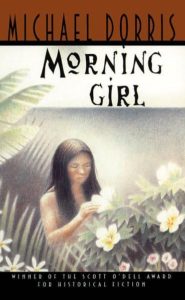 |
By Michael Dorris, Morning Girl (Little, Brown, 1999) is the story of siblings Morning Girl and Star Boy, growing up in the lovely world of their Caribbean island in the fatal year 1492. It ends as Morning Girl welcomes a boatload of strange visitors – and an epilogue, from Columbus’s diary, ominously indicates what the future holds. For ages 8-12. |
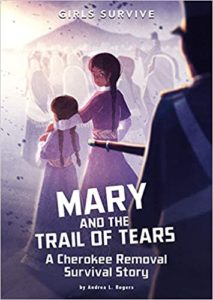 |
One of the Girls Survive series, Mary and the Trail of Tears by Andrea L. Rogers (Capstone, 2020) is the story of 12-year-old Mary and her Cherokee family, forced from their home in Georgia by the U.S. Army and sent on a forced march to Indian Territory via what came to be called the Trail of Tears. For ages 8-12. |
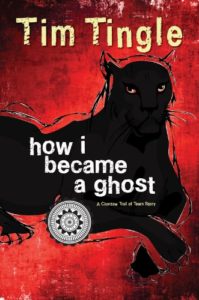 |
Tim Tingle’s How I Became a Ghost (Roadrunner Press, 2015) is set on the Trail of Tears – the path taken by thousands of Native Americans in the 1830s following Andrew Jackson’s Indian Removal Act that sent tribes from their homelands to designated “Indian territory” west of the Mississippi River. The story is narrated by Isaac, a young Choctaw boy, who didn’t survive the journey. For ages 9-12. For more information, see Trail of Tears. |
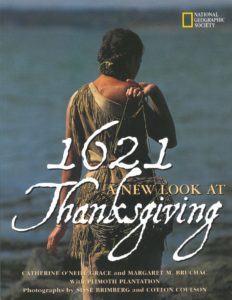 |
By Catherine O’Neill Grace and Margaret M. Bruchac, 1621: A New Look at Thanksgiving (National Geographic, 2004) attempts to dispel the mythological Thanksgiving story that so many of us have grown up with by presenting a historically balanced account of the event and incorporating the point of view of the participating Wampanoags. Illustrated with wonderful photos of re-enactors at Plimouth Plantation. For ages 8-12. |
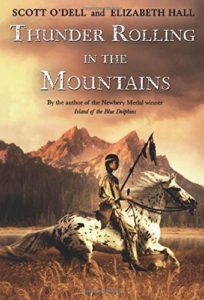 |
By Scott O’Dell, Thunder Rolling in the Mountains (HMH, 2010) is the heart-wrenching story of the defeat of the Nez Perce Indians in 1877 by the U.S. Army, narrated by Chief Joseph’s young daughter. For ages 8-12. From the History Place Great Speeches Collection, see Chief Joseph Surrenders. |
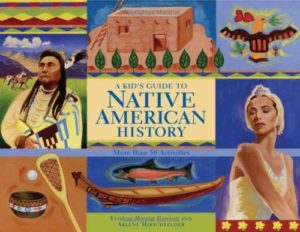 |
By Yvonne Wakim Dennis, A Kid’s Guide to Native American History (Chicago Review Press, 2009) covers the tribes and cultures of nine major geographical areas in the continental United States, Alaska, and Hawaii. Included are capsule biographies of notable people, maps and timelines, background information, and hands-on activities, games, recipes, and crafts. For example, kids make a storyteller bag, cook a batch of succotash, create ledger art, and play a game of stone jacks. For ages 9 and up. |
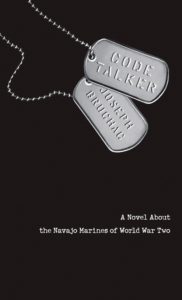 |
Joseph Bruchac’s Code Talker (Speak, 2006) is the story of the Navajo code talkers whose unbreakable code – their native language – saved innumerable lives during World War II. The story is told through the eyes of sixteen-year-old Ned Begay, a Navajo boy who becomes a code talker. For ages 12 and up. For younger readers, see Bruchac’s picture book Chester Nez and the Unbreakable Code (Albert Whitman and Company, 2018). For ages 6-9. |
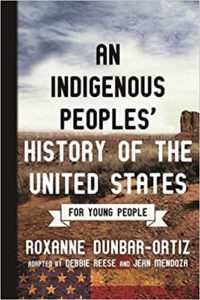 |
Roxanne Dunbar-Ortiz’s An Indigenous Peoples’ History of the United States for Young People (Beacon Press, 2019), an adaptation of the adult book, is history from a perspective rarely (never?) encountered in traditional textbooks, beginning with American origin myths and ending with the 21st century. Highly recommended for ages 12-17. |
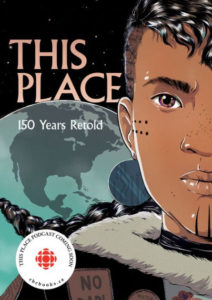 |
This Place: 150 Years Retold (Highwater Press, 2019) is a graphic-novel anthology of 150 years of indigenous Canadian history: ten stories, each accompanied by a timeline of the events surrounding the narrative. For ages 15 and up. |
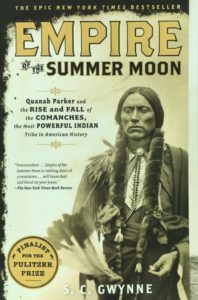 |
By S.C. Gwynne, Empire of the Summer Moon (Scribner, 2010) is the story of Cynthia Ann Parker – kidnapped by the Comanches at the age of nine – and her son Quanah, the canny warrior who became the tribal chief of the last free riders of the plains. For teens and adults. |
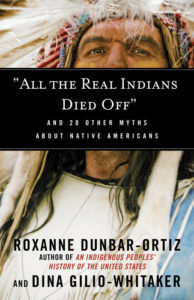 |
By Roxanne Dunbar-Ortiz and Dina Gilio-Whitaker, All the Real Indians Died Off (Beacon Press, 2016) debunks twenty major myths about Native Americans, among these “Columbus Discovered America,” “Indians Were Savage and Warlike,” and “Europeans Brought Civilization to the Backward Indians.” Thought-provoking for teens and adults. |
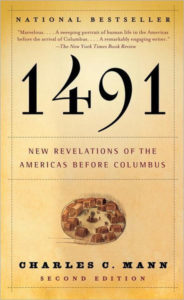 |
By Charles C. Mann, 1491 (Vintage, 2006) is a fascinating picture of the Americas before the arrival of Columbus – followed by 1493 (Vintage, 2012), the story of the world that Columbus created. Wide-ranging and multifaceted histories for teens and adults. |
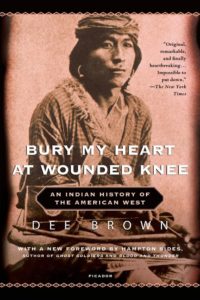 |
Dee Brown’s Bury My Heart at Wounded Knee: An Indian History of the American West (Picador, 2007), first published in 1970, is a devastating and carefully researched account of the destruction of Native American tribes in the second half of the 19th century. A powerful and painful narrative for teens and adults. |
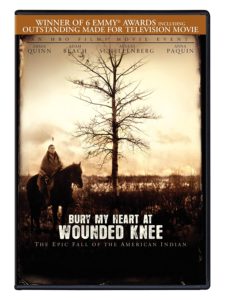 |
The movie (2007) based on the book chronicles the displacement of Native American tribes following the Battle of Little Bighorn. |
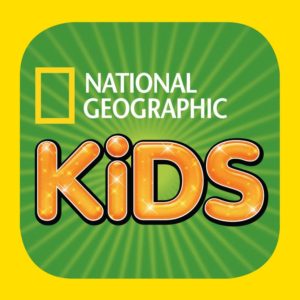 |
National Geographic Kids: Native Americans has reader-friendly, fact-filled, photo-illustrated accounts of Native American tribes by region. |
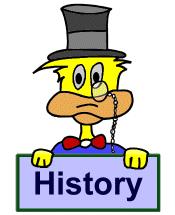 |
From Ducksters, see Native American History for Kids – an overview covering culture and religion, social structure, myths and legends, major historical events, individual tribes and regions, and famous Native Americans. |
|
History for Kids: Native American History has pages on individual nations, famous people, homes, clothing, mythology, art, religions, and more. |
|
| From TED Ed, see Native Americans for Kids: Cherokee, Apache, Navajo, Iroquois, and Sioux. |
